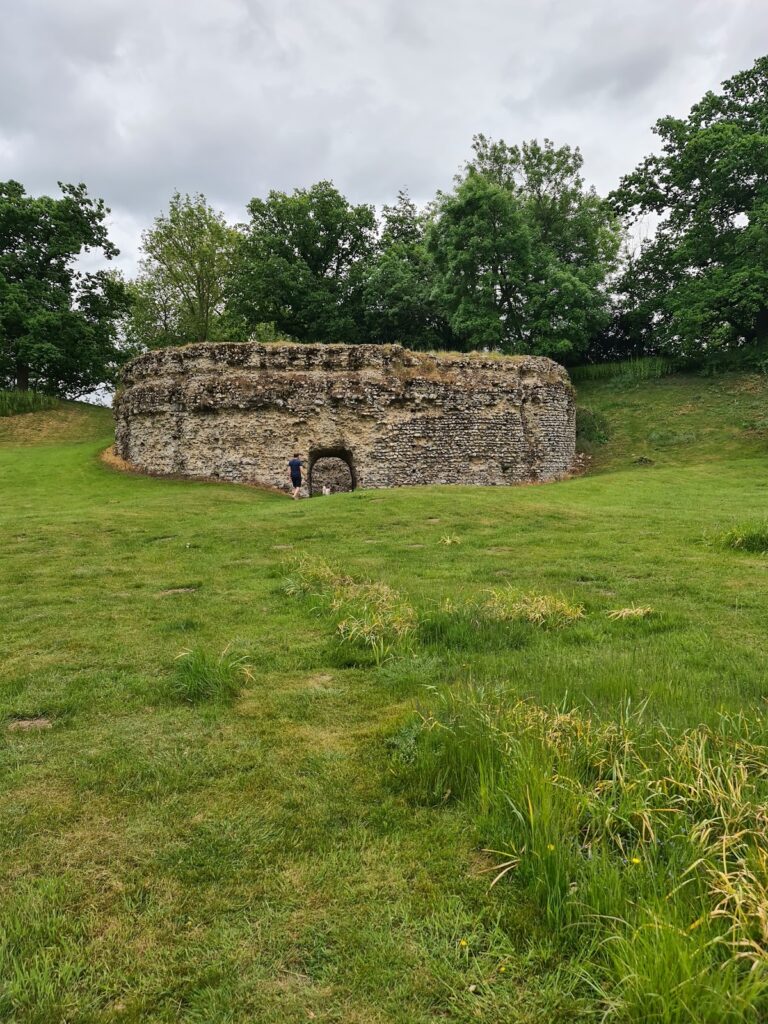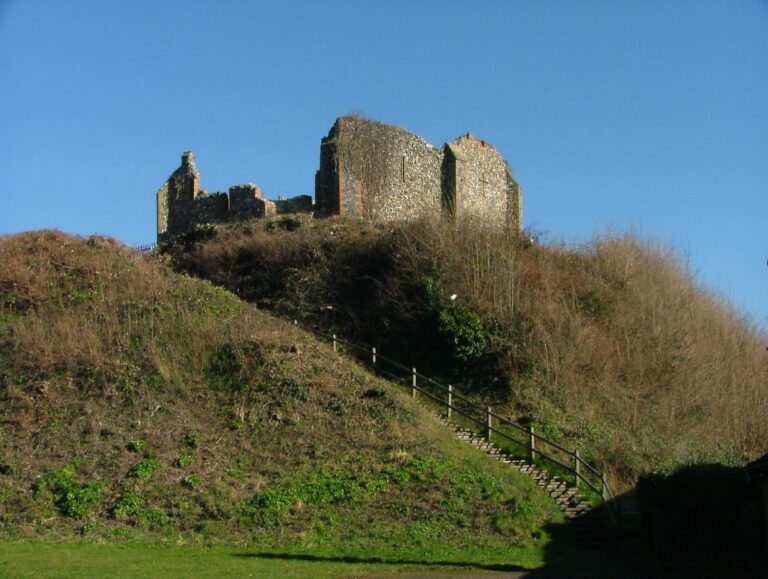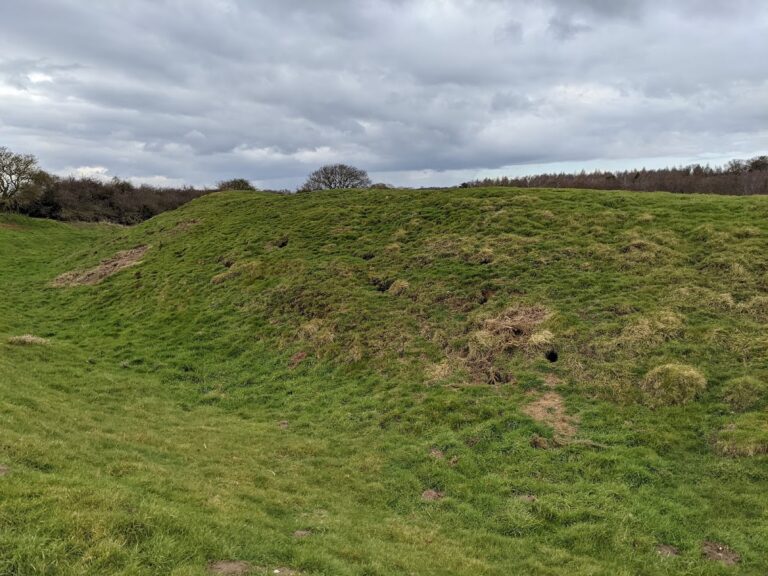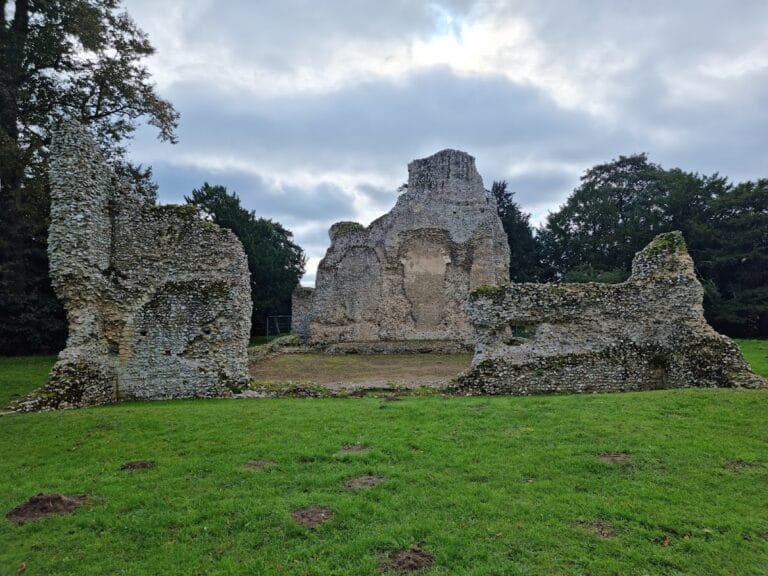Buckenham Castle: A Norman Fortification in Norfolk, England
Visitor Information
Google Rating: 4.6
Popularity: Very Low
Google Maps: View on Google Maps
Country: United Kingdom
Civilization: Unclassified
Remains: Military
History
Buckenham Castle is located near the village of Old Buckenham in Norfolk, England. It consists of two adjacent fortifications built by the Normans following the conquest of England.
The first, known as Old Buckenham Castle, was established by William d’Aubigny, a supporter of William the Conqueror, as a Norman stronghold. This initial fortress played a role in the early consolidation of Norman authority in the region. After strategic considerations, the castle was relocated a few miles away, and the original site was repurposed to found Old Buckenham Priory. The creation of the priory led to the destruction of many early structures linked to the castle’s first phase.
In the early reign of King Stephen (1135–1154), the Aubigny family built a second fortress known as New Buckenham Castle approximately two miles southeast of the original location. This move coincided with the establishment of a planned settlement designed to support the castle and its garrison, which evolved into the modern village of New Buckenham. The village layout largely preserves its medieval design, reflecting the close relationship between the community and the fortress.
During the mid-13th century, New Buckenham Castle saw military action when it was besieged amid the Barons’ War in 1263, a conflict between rebellious barons and royal forces. In 1316, ownership passed to Adam de Clifton before the estate transferred to the Knyvett family through marriage connections. By 1465, John Knyvett resided in the castle, maintaining its status as a noble stronghold.
The 17th century marked the end of the castle’s defensive function. In 1649, Philip Knyvett, the 1st Baronet, ordered the castle’s demolition, effectively reducing it to ruins. Today, only the moat and earth ramparts survive from the once-imposing fortress. Although closely associated with the village of New Buckenham, the castle ruins and nearby structures like St Mary’s chapel are situated within the parish of Old Buckenham. The site is protected as a Grade I Listed building and a Scheduled Monument, underscoring its historical importance.
Remains
New Buckenham Castle was constructed as a complex of fortifications comprising a central stronghold and multiple enclosed courtyards known as baileys. The layout featured an inner bailey, which served as the primary defensive enclosure, accompanied by two outer baileys likely used for additional protection and support functions. These areas were all surrounded by earthen walls, forming a fortified boundary that leveraged the natural landscape.
The principal surviving architectural element is the foundation of a circular stone keep, notable for being the earliest known circular keep built in England. This keep measures approximately 60 feet (18 meters) across and was originally supported by walls about 11 feet (3.3 meters) thick at the base. Records estimate that the tower once reached a height of up to 40 feet (12 meters), a formidable presence during its period of use.
Beyond the keep, the castle’s design included earthworks such as moats and ramparts, which remain visible today. These earth ramparts trace the outline of the former defensive walls and offer insight into the castle’s imposing profile at the time of its occupation. Despite the demolition in the mid-17th century, these landscape features provide a tangible connection to the castle’s military past.
The site also encompasses St Mary’s chapel, which was later adapted as a barn, illustrating how the castle’s associated structures were repurposed over time. These ruins, together with the surrounding meadows and earthworks, are protected within the same scheduled area, preserving the integrity of the historic environment.
Situated approximately 50 meters above sea level on mostly flat terrain, the castle occupies a strategic location near important roads linking Norwich and London. The slight rise in elevation and the combination of natural and man-made earthworks contributed to the castle’s defensive capabilities. Today, the remains stand as a testament to Norman military architecture and the feudal history of Norfolk.










